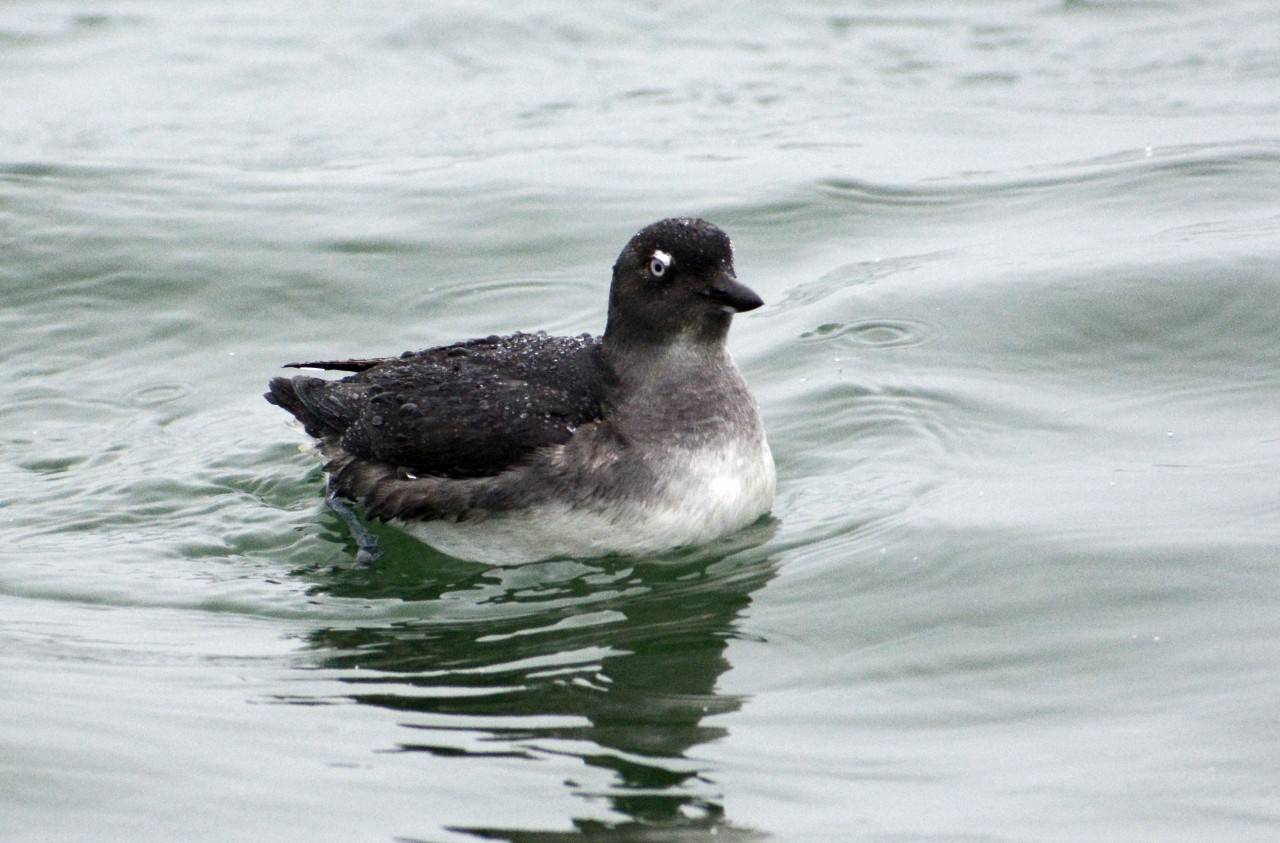By Dianna Moore
Grays Harbor Audubon
This is another bird I have wanted to feature in this column since I began in 2010, but it takes a good photo to lead off and this is the first one available.
General Description: One of the most numerous of the north Pacific alcids, the Cassin’s Auklet is a small seabird with a dark gray back and lighter underparts, typical of seabirds that sit on the surface of the ocean. They have a small crescent-shaped white patch above their eyes, another white patch at the base of their short, thick bill and they sport bright blue feet. Dr. Julia Parrish describes the color as, “Think of 1960’s painted-on eye shadow.”
They are robin-sized, with a length of 9.1 inches and weighing approximately 5.3 to seven ounces.
Habitat: Cassin’s Auklets are generally found far offshore on the open ocean on the outer edge of the continental shelf most of the year. They come ashore to breed on small offshore islands free of mammalian predators. Washington birds prefer shrubby habitat and cliffs.
Behavior: These are very sociable birds, associating in large rafts on the water feeding together and nesting in large colonies on land, mostly in burrows underground. They are able to dive up to 120 feet using their short wings as propulsion. They feed by day and night but leave and return to their colonies in the dark.
Diet: The diet of Cassin’s Auklets is mostly small fish and crustaceans such as krill.
Nesting: Cassin’s Auklets use burrows in large colonies if possible. If no burrows are available they will use piles of rocks, debris, cracks under buildings, caves, and even under trees in the root system. Both sexes dig burrows if there is enough soil but nothing is added to the burrow. The pair use the same burrow year after year. Both parents incubate one egg for anywhere from five and a half to eight weeks. Both parents care for the chick until it fledges in six to seven weeks when it heads straight for the water. It is able to swim and dive from the time it hits the water.
Migration: These birds are non-migratory.
Conservation Status: Cassin’s Auklets make up 34% of all breeding seabird populations in the state. They are found from Alaska to Mexico and do well in some areas and not so much in others. They are vulnerable to human disturbance and introduced predators, and breed on only six islands. Oil contamination is another very real problem at sea. Their nesting islands are wildlife refuges, so they are protected as well as possible in our state.
When and Where to Find on Grays Harbor: Since these birds are seen offshore, your best bet to see one is a pelagic trip with
Westport Seabirds (westportseabirds.com). Occasionally, as in the photo, they show up in the marinas but the boat trips are more likely to find them out where they hand out on the open ocean. Just don’t forget your anti-seasickness meds.


